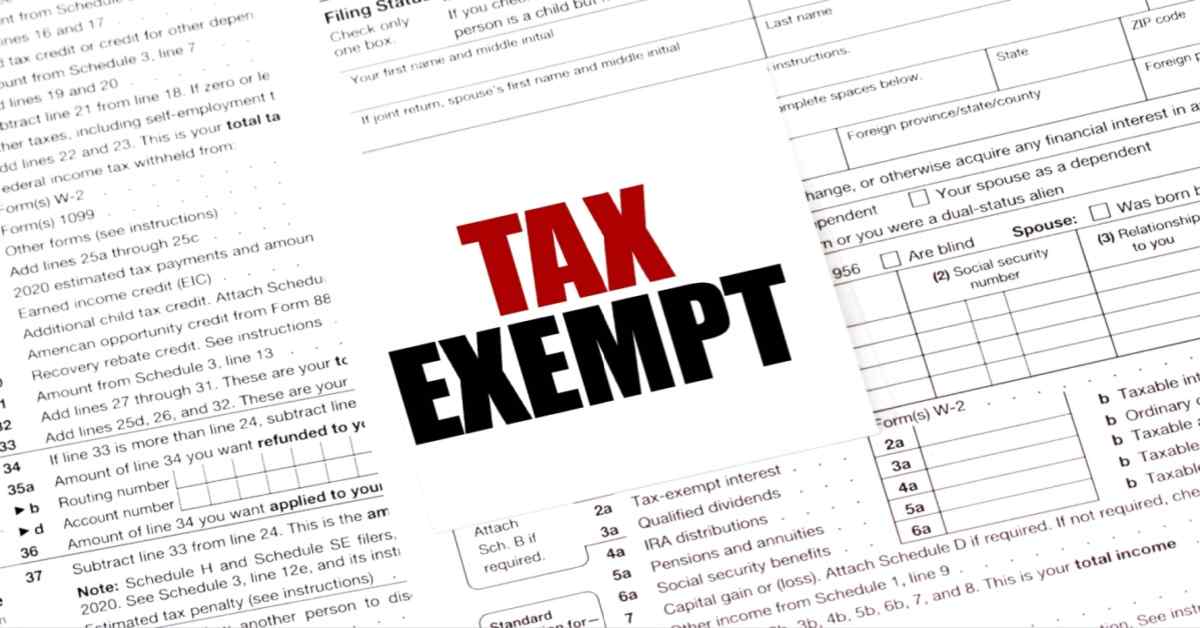Table of Contents
Quality Service Guarantee Or Painting Free

Get a rental agreement with doorstep delivery

Find the BEST deals and get unbelievable DISCOUNTS directly from builders!

5-Star rated painters, premium paints and services at the BEST PRICES!
Loved what you read? Share it with others!


Submit the Form to Unlock the Best Deals Today
Help us assist you better
Check Your Eligibility Instantly

Experience The NoBrokerHood Difference!
Set up a demo for the entire community
Leave Encashment Tax Exemption in India 2025
Table of Contents
For many Indian salaried employees, accumulating leave credits is a standard practice. While these leaves offer a break, converting them into cash through leave encashment can boost your finances. However, understanding the tax implications of leave encashment is crucial. This guide delves deep into the leave encashment tax exemption in India, exploring taxability scenarios, exemptions for private employees, and strategies to enhance your benefits. By the end of this guide, you'll be well-equipped to make informed decisions that maximise your financial gains.
Key Leave Encashment Rules At a Glance
Here’s a table highlighting key details about the encashment of leaves in India:
| Detail | Description |
| Applicable to | Salaried employees in India (Government and Private Sector) |
| Tax Exemption Conditions | Fully exempt for government employees regardless of amount. |
| Conditional exemptions for private sector employees based on exemption limits and service period. | |
| Taxable Scenarios | Exceeding exemption limits during active service or at the time of encashment. |
| Calculation of Encashment | Typically based on the daily wage multiplied by the number of unused leave days. |
| Section Governing Exemptions | Section 10(10AA) of the Income Tax Act, 1961 |
| Exemption Limits | Varies; ₹25 lakh for most recent assessments but subject to periodic revisions. |
| Strategies for Maximisation | - Plan encashment towards the end of career or at retirement for government employees. |
| - Monitor income levels and plan encashment when earnings are lower for private employees. | |
| Impact on Future Leave | Reduces the number of leaves available for future use, affecting holiday plans and emergencies. |
Leave Encashment in India: Scenarios and Tax Treatment
The tax treatment of leave encashment depends on several factors, including your employment status, the timing of encashment, and the applicable exemption limits. Here's a breakdown of the key scenarios:
Quality Service Guarantee Or Painting Free

Get a rental agreement with doorstep delivery

Find the BEST deals and get unbelievable DISCOUNTS directly from builders!

5-Star rated painters, premium paints and services at the BEST PRICES!
Fully Taxable Leave Encashment
- During Service: Any leave salary encashment availed of while you're actively employed is generally considered income and added to your taxable salary. This applies to both private and government sector employees.
- Exceeding Exemption Limit: If the total leave encashment amount exceeds the permissible limit for exemption (discussed later), the excess amount falls under your taxable income.
Example
Let's say you're a private sector employee with a basic salary of ₹50,000 per month. You decide to encash 30 unused leaves. The leave encashment calculation at your company offers ₹2,000 per leave. Here's how the taxability plays out:
- Total encashment amount = ₹2,000/leave x 30 leaves = ₹60,000
- Since the current exemption limit is ₹25 lakh, the entire ₹60,000 would be exempt under Section 10(10AA)(ii) discussed later. However, if the leave encashment formula offered ₹3,000 per leave, the scenario changes:
- Total encashment amount = ₹3,000/leave x 30 leaves = ₹90,000
- In this case, only the exemption limit of ₹25 lakh remains tax-free. The remaining ₹65,000 (₹90,000 - ₹25 lakh) would be added to your taxable income.
Leave Encashment Exemptions
Fortunately, there are scenarios where leave encashment is entirely exempt from tax. These exemptions are:
- Leave Encashment Exemption for Government Employees: Leave encashment received by government employees, both central and state, is generally tax-free regardless of the amount.
- Legal Heirs of Deceased Employees: Leave encashment paid to the legal heirs of a deceased employee, irrespective of their employment status, is not subject to income tax.
Section 10(10AA)(ii): Partial Exemption for Private Sector Employees
Private sector employees can claim a partial exemption on leave encashment under Section 10(10AA)(ii) of the Income Tax Act, 1961. This section offers relief by allowing the exemption of the least of three calculated amounts:
- Leave Encashment Calculation: Basic Salary x Number of Encashed Leaves. This calculation directly correlates your leave encashment amount with your basic salary.
- Maximum Exemption Limit: The government periodically revises this limit to account for inflation. As of Budget 2023, the maximum exemption limit for leave encashment is ₹25 lakh.
- Balance Exemption Amount Carried Forward: This applies if you haven't utilised the full exemption limit in previous years. Any remaining exemption can be carried forward and used in subsequent years, subject to certain conditions.
Calculating Leave Encashment Exemptions in India
Calculating leave encashment can vary between government and private sector employees in India. Here's a detailed guide on how it can be done for both:
Basic Leave Encashment Calculation Formula
Leave Encashment= [(Basic Salary + DA)/30] x No. of Unused Leave Days
Where:
- Basic Salary: This is the basic monthly salary of the employee.
- DA (Dearness Allowance): This is an allowance paid to employees to mitigate the impact of inflation on their cost of living.
- 30: Represents the average number of days in a month.
- No. of Unused Leave Days: The number of leave days that the employee has not used and is eligible for encashment.
Calculating Leave Encashment Exemption for Government Employees
For government employees, leave encashment is typically calculated at the time of retirement or upon leaving the job. The calculation formula is straightforward:
- Daily Wage Calculation: First, calculate the daily wage by dividing the last drawn basic pay plus dearness allowance (DA) by the number of days in a month (usually 30).
- Leave Encashment Amount: Multiply the daily wage by the number of days of accumulated leave, up to the allowed maximum. Government employees are usually allowed to accumulate a certain number of leaves, often up to 300 days.
Calculating Leave Encashment Exemption for Private Employees
For private sector employees, the calculation method can vary depending on the company's policy, but it generally involves a similar approach. The key difference is often in the treatment of tax exemptions and the maximum limit of leave that can be encashed.
- Daily Wage Calculation: Calculate the average daily wage. This might be based on the basic salary or on the total gross salary depending on company policy.
- Maximum Leave Days: Companies may have a limit on how many leave days can be encashed, which could be different from government rules.
- Leave Encashment Amount: Multiply the daily wage by the number of leave days eligible for encashment.
Illustrative Examples for Leave Encashment Calculation
Let's explore some examples to understand how Section 10(10AA)(ii) works:
Leave Encashment Calculation Example 1
You're a private sector employee with a basic salary of ₹40,000 per month. You decide to encash 20 unused leaves, and your company's leave encashment policy offers ₹2,500 per leave. Here's the calculation:
- Basic Salary x Number of Encashed Leaves: ₹40,000/month x 20 leaves = ₹8,00,000
- Maximum Exemption Limit: ₹25,00,000
- Balance Exemption Amount Carried Forward: Let's assume you haven't used any leave encashment exemption in prior years, so the carried forward amount is ₹0.
- Now, we need to identify the least of these three values:
- Least = min (₹8,00,000, ₹25,00,000, ₹0) = ₹8,00,000
- Therefore, under Section 10(10AA)(ii), you can claim a tax exemption of up to ₹8,00,000 on your leave encashment. The remaining amount (if any) will be added to your taxable income.
Leave Encashment Calculation Example 2
Imagine you're a private sector employee earning ₹60,000 per month and have 30 accumulated leaves. The leave encashment policy offers ₹3,000 per leave. You haven't availed of any leave encashment exemption in previous years. Let's calculate the exemption:
- Basic Salary x Number of Encashed Leaves: ₹60,000/month x 30 leaves = ₹18,00,000
- Maximum Exemption Limit: ₹25,00,000
- Balance Exemption Amount Carried Forward: ₹0 (assuming no previous exemptions)
- Here, the least value is:
- Least = min (₹18,00,000, ₹25,00,000, ₹0) = ₹18,00,000
- So, you can claim a tax exemption of up to ₹18,00,000 on your leave encashment. The remaining ₹ (₹18,00,000 - ₹18,00,000) = ₹0 will not be taxed.
Maximising Your Leave Encashment Benefits
Understanding the tax implications empowers you to make informed decisions and maximise your leave encashment benefits. Here are some strategies to consider:
Planning Your Leave Encashment
- Strategically manage your leave balance. If you're nearing retirement, consider encashing a larger portion of your leaves closer to your retirement date, especially if you're a government employee who enjoys full exemption.
- For private sector employees, analyse your leave encashment policy and exemption limits to plan your encashment strategically throughout your career.
Negotiating Leave Encashment Terms
- In some organisations, particularly smaller companies, there might be a degree of flexibility in leave encashment policies. You could explore the possibility of negotiating a higher leave encashment limit with your employer. However, ensure any agreements are documented for clarity and to avoid future disputes.
Considering Future Salary Increases
- When calculating the exemption under Section 10(10AA)(ii), your basic salary plays a crucial role. If you anticipate a significant salary increase in the near future, it might be prudent to postpone leave encashment. This could potentially increase the exemption amount you can claim when your basic salary is higher.
Beyond Tax Implications: Other Considerations for Leave Encashment
While tax implications are a significant factor, other considerations come into play when deciding on leave encashment:
- Impact on Future Leave Availability: Encashing a large number of leaves might reduce your available leaves in the future, potentially impacting your ability to take planned vacations or address emergencies.
- Company Policy and Restrictions: Some companies might have limitations on the number of leaves that can be encashed in a single year. Review your company's leave encashment policy thoroughly before making a decision.
- Financial Needs and Goals: Consider your current and future financial needs. If you require immediate funds, leave encashment can be a helpful option. However, if you prioritise building your long-term savings, using your leaves for actual vacations might be a more sustainable approach.
Leveraging Leave Encashment Tax Exemptions Effectively
Navigating through the complexities of leave encashment tax exemptions can significantly enhance your financial outcomes in India. By thoroughly understanding these tax rules and planning your leave encashment strategically, you can optimise the benefits and reduce your tax burden. Whether you're approaching retirement or simply planning your financial future, informed decisions about leave encashment can provide considerable financial relief. For further assistance and detailed planning, NoBroker offers expert services tailored to your needs.Check out NoBroker’s extensive range of services for all your real estate needs.
Frequently Asked Questions
Ans: Leave encashment refers to the amount an employee receives in exchange for their accrued but unused leave days, typically calculated based on their daily wage.
Ans: All government employees receive full tax exemptions on leave encashment. Private sector employees have conditional exemptions based on the amount encashed and their service duration.
Ans: All government employees receive full tax exemptions on leave encashment. Private sector employees have conditional exemptions based on the amount encashed and their service duration.
Ans: The key factors include the employment sector, total amount encashed, and the applicable laws under the Income Tax Act, which may provide specific limits and conditions for exemptions.
Ans: Yes, encashing your accrued leaves reduces the number of available leave days, which might affect future plans for rest or dealing with emergencies.
Ans: Plan your leave encashment around your career's financial peaks and troughs, and consider the timing, such as nearing retirement, to utilise the full potential of tax exemptions.
Recommended Reading

Nagpur Property Tax: Online Bill Payment, Receipt Download and Tax Calculator in 2025
January 28, 2025
19264+ views

How to pay BBMP property tax online and offline, view the bill, and download the receipt in 2025?
January 23, 2025
9258+ views

GHMC Property Tax: How to Calculate and Pay Tax Online?
January 22, 2025
14147+ views

How to pay Assam property tax online and offline, view the bill, and download the receipt in 2025?
January 18, 2025
2028+ views

Noida's Property Tax Laws: The Ultimate Guide
January 16, 2025
5998+ views
Loved what you read? Share it with others!
Most Viewed Articles

Franking Charges Explained: Meaning and Benefits
December 31, 2024
1046752+ views

What is the BBMP E-Khata Registration process for property owners in Bangalore, Karnataka in 2025?
January 16, 2025
83442+ views

Supreme Court Verdict on Society Maintenance Charges
December 17, 2024
72319+ views

All You Need to Know about Revenue Stamps
December 17, 2024
60822+ views

Stamp Duty and Registration Charges in Bangalore in 2025
January 23, 2025
53059+ views
Recent blogs in
Nagpur Property Tax: Online Bill Payment, Receipt Download and Tax Calculator in 2025
January 28, 2025 by Nivriti Saha
Stamp Duty and Property Registration Charges in Mumbai 2025
January 23, 2025 by Kruthi
What are the current Stamp Duty and Property Registration Charges in Karnataka for 2025?
January 23, 2025 by Prakhar Sushant
Stamp Duty and Registration Charges in Bangalore in 2025
January 23, 2025 by Vivek Mishra



Join the conversation!